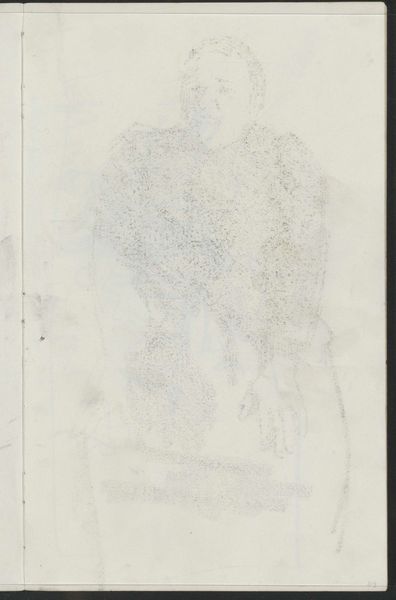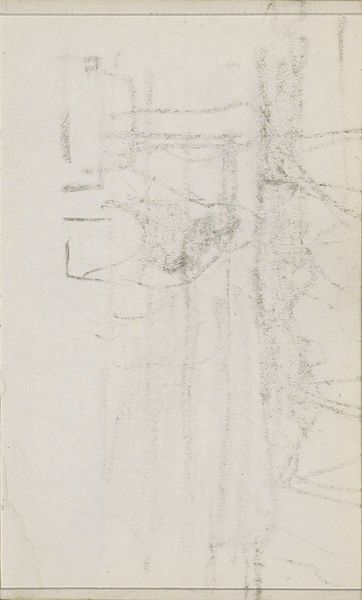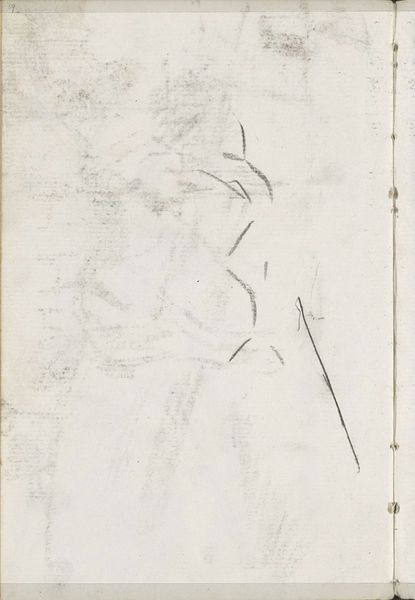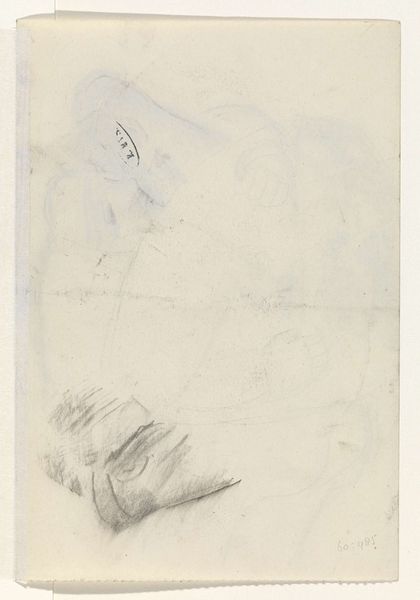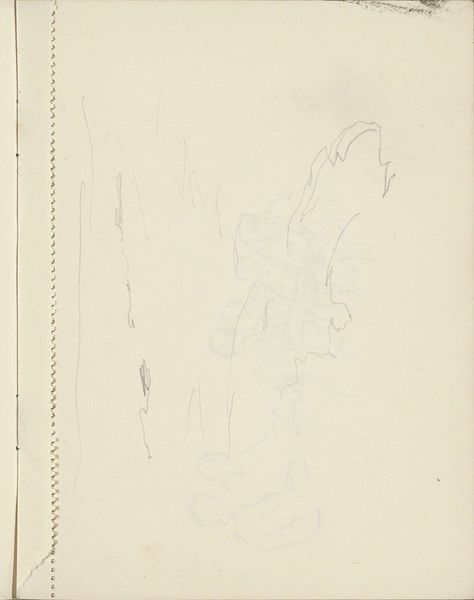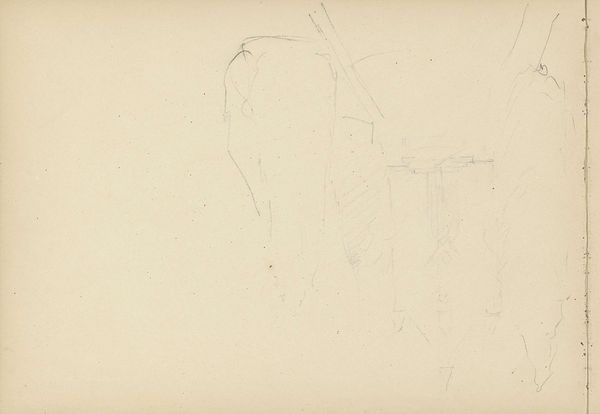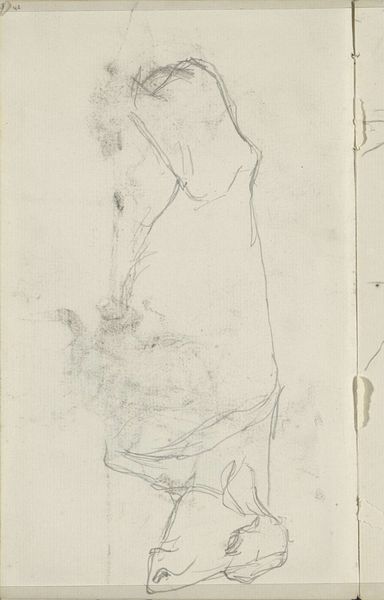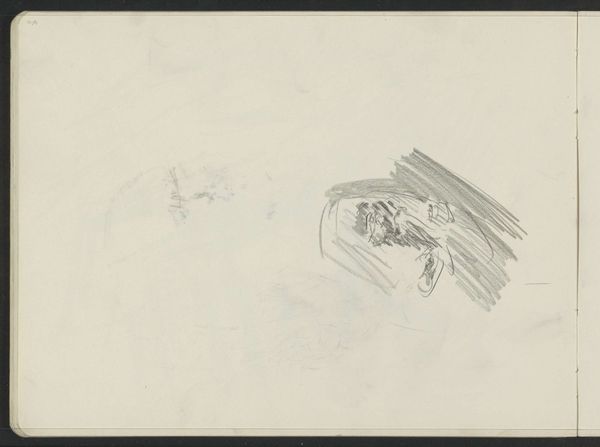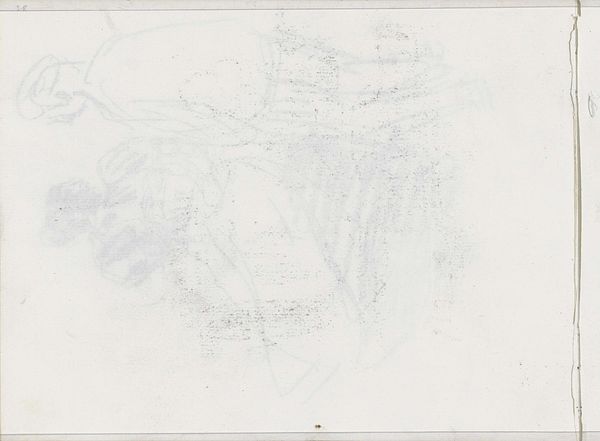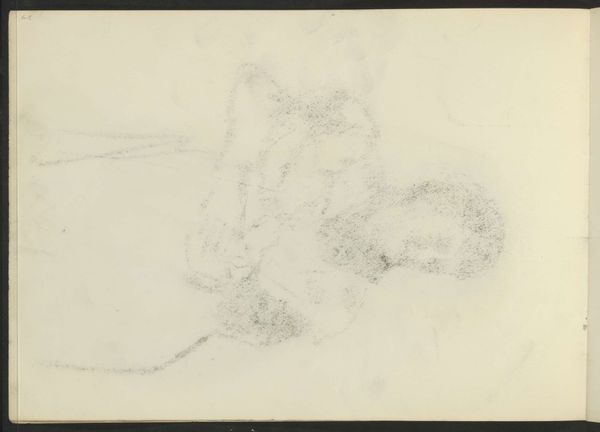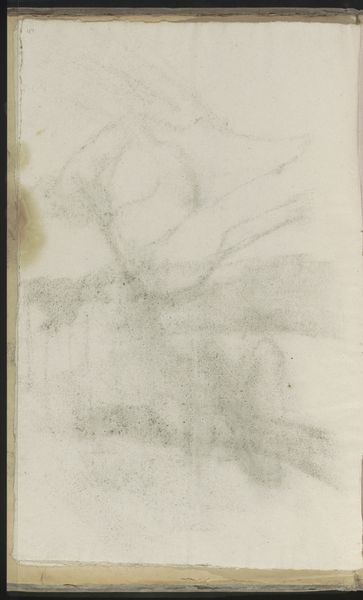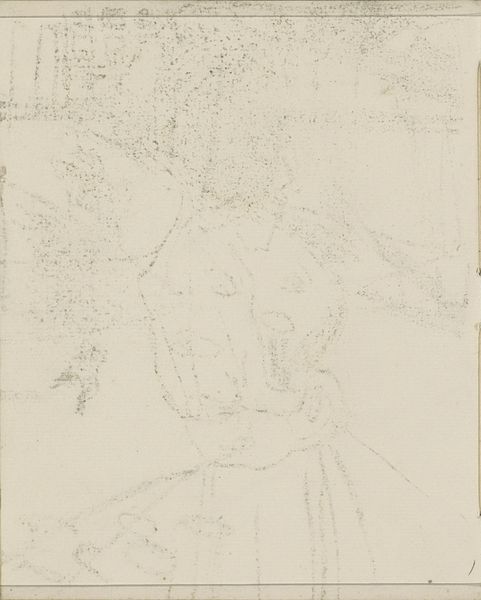
drawing, paper, pencil
#
portrait
#
drawing
#
figuration
#
paper
#
pencil
Copyright: Rijks Museum: Open Domain
Curator: We’re looking at "Abklatsch van de krijttekening op blad 21 verso", or "Counterproof of the Chalk Drawing on Page 21 Verso." It’s by Isaac Israels and thought to date between 1875 and 1934. It’s a pencil drawing on paper. What strikes you first about it? Editor: Its ephemeral quality. The figure seems to be emerging from or dissolving into the page itself, like a memory fading. Curator: Interesting. Israels has created this impression using a counterproof technique, which explains its hazy appearance. The original drawing would have been pressed against another sheet of paper, transferring a reversed, and often fainter, image. Look closely at the details – the soft shading and the tentative lines that define the sitter's form. This method almost makes the subject secondary to the textures it creates. Editor: Yet the act of reproduction and transfer carries significance. Israels is not only representing a subject but is engaging with the processes of image-making, creating layers of meaning. What was the social context for portraiture in that period, and who were deemed worthy of representation? The partial, almost ghostly portrayal suggests a commentary on identity. Curator: Perhaps. Or perhaps it reflects the artist’s interest in capturing fleeting moments. Notice how the sketch, rather than being a highly finished piece, possesses an immediacy and an openness. It avoids the formal rigidity often associated with academic portraiture of the time. Editor: Still, it’s hard to overlook the subject's anonymity and lack of detail, almost stripping them of agency. It feels charged to see representation that avoids celebrating bourgeois ideals of status and individualized portraiture. What is highlighted instead? Curator: Here, what shines through is the artist’s engagement with his materials and his exploration of form. He’s playing with the very essence of image creation. Editor: Which inevitably begs the question: why choose this technique and subject? The layering and ambiguity invite us to contemplate broader socio-political themes of access, representation, and disappearance. Curator: A fascinating perspective. This prompts an appreciation for the dialogue between form and meaning within the work. Thank you. Editor: Indeed. And it compels us to interrogate the artistic choices within their specific historical contexts, doesn't it? Thank you as well.
Comments
No comments
Be the first to comment and join the conversation on the ultimate creative platform.
